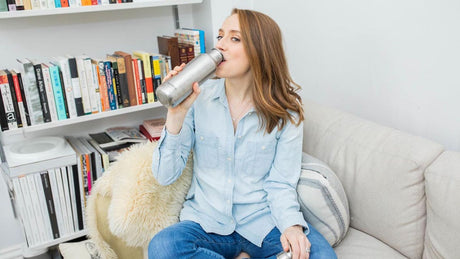Abby K. Cannon was an attorney who, after years of pounding the pavement in some of the top schools in our country took a look at her life and wanted more. “While practicing law in New York City, I often felt like succeeding in my job required that I sacrifice my health. After a few months at my first job as an attorney, I didn’t feel like myself,” she says. She enrolled (again) in school to become a dietitian and quickly became interested in living a low-waste, yet approachable lifestyle. What does this look like? For Abby, this meant a total review of what she used on and inside her body and a remix of her daily habits. Oh, and a totally understandable and entertaining website showing you how to do it, too. Here, she shares the truths and myths about living as close to a zero waste lifestyle as possible.
Truth # 1: The products really are as good (if not better!) than conventional products.
You might see a product described as “natural,” “non-toxic,” “sustainably made,” or “eco-friendly” and automatically assume that it won’t perform as well. Fortunately, the products in this space – from food to skincare to children’s toys – actually work! Sometimes getting used to these products requires a transition period and some patience. For example, when going from conventional deodorant to non-toxic deodorant in eco friendly packaging, your body might need a few days to adjust. However, once you’ve adjusted, you’ll fall in love with the products! They’ll make you look your best and feel even better.
My favorite skincare brands are Indie Lee, Raw Elements, Meow Meow Tweet and Loli Beauty.
Truth #2: It supports the healthiest eating habits.
When you pay attention to the packaging food comes in and how it’s made, you’re naturally going to start filling up on the healthiest foods – those that are plastic and package free.
Most packaged foods are filled with added sugar, additives, preservatives, and processed ingredients. Even “healthier” packaged foods tend to be high in sugar (yes, maple syrup is still sugar!) and other not-so-healthy ingredients. Fruits, vegetables, whole grains, and beans, on the other hand, often come package free (think loose produce and buying from the bulk section) and they form the base of the most health supportive diet. Low waste living encourages you to choose the healthiest foods from a healthy mindset. It’s not about restricting, it’s about filling up on the most nutrient dense foods that are in as close to their natural state as possible!
Because of COVID-19 many bulk sections are closed. Check out the Wally Shop for a bulk section shopping experience online.
Myth: Low waste living is all or nothing.
You might be inclined to think that to live a low waste lifestyle you have to give up all modern luxuries and move into a log cabin in the woods. If you want to do that, that’s great (it’s certainly tempting for me!). However, you don’t have to! There’s no “low waste living police force” that will catch you if you purchase food that’s wrapped in plastic or a new outfit made of synthetic materials. You get to choose which parts of this lifestyle work for you now. In fact, starting with small changes – swapping your plastic toothbrush for a bamboo one or your takeout coffee cup for a reusable one – actually leads to greater success. You don’t have to do it all to be part of this movement. Every little bit helps. And, by making little change after little change you might just find that you’re doing more than you ever thought possible to protect the environment!
